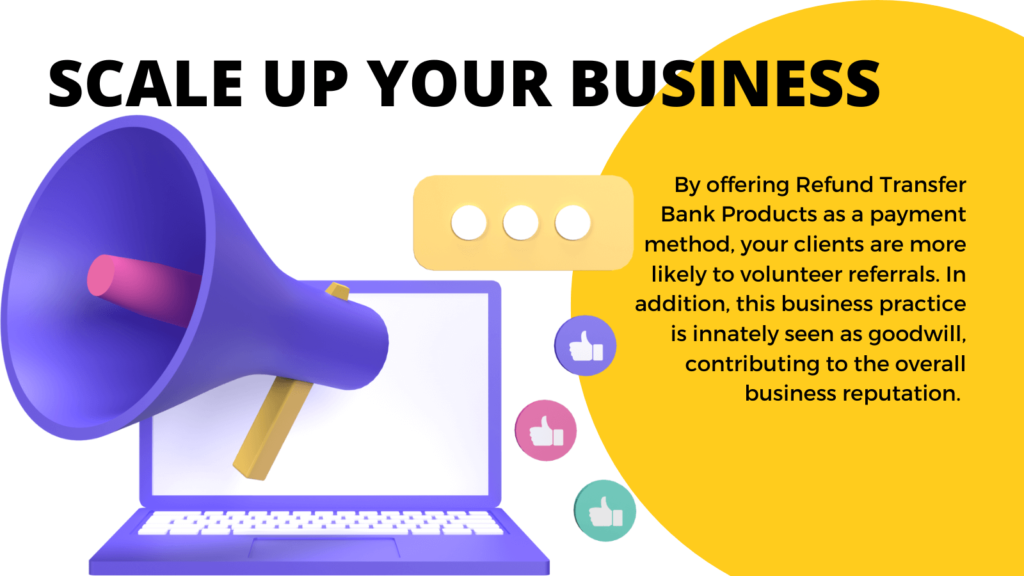As a tax professional, you understand the importance of marketing to grow your business. But with so many marketing channels and strategies available, it can be difficult to know where to start. To transition from a side gig to a full-time business, you need to market your tax business and grow your practice without spending thousands of dollars marketing. Consider these seven ways to market your tax business to attract clients and increase sales:
Build your brand
Building a great brand can take time, so be patient, but once established, it will last for decades. A strong brand will help you attract clients, negotiate better rates from vendors and charge higher fees. Your brand should be memorable and consistent across all your marketing materials.
As a tax professional, the best way to build your brand is by having a strong focus on your customers and their needs. This means understanding what they want and what they need. It also means ensuring you have the right mix of products or services for them at the right price point so you can compete in the marketplace and dominate the space. The market will come to you if you put yourself in their shoes and meet their needs.
You might also want to consider your unique selling proposition (USP). Your USP is the one thing that makes your business stand out from the crowd. What is it that you do that others don’t do? What is it that makes you different from everyone else? Why would someone choose to work with you over someone else? If you don’t know your USP, it’s time to create one.
Create a marketing plan
A marketing plan is a written document outlining how you’re going to market your business. The best marketing plans are specific, creative, and consistent. A marketing plan should outline how you will market your business, who you will market to, how you will market to them, and how you will measure your results. It should also include a timeline of when you expect to see results. Your marketing plan should be updated on a regular basis to keep up with the current trends in your industry. It’s also important to note that a marketing plan is fluid and can change based on your current situation. You might have a great marketing plan, but if you don’t follow it, you won’t see any results. Marketing is not a one-time thing. You must consistently follow through with your plan if you want results.
Research your competition
Before choosing how you want to market your business, you first need to research your competition, such as other tax businesses and tax professionals in your area. What are they doing to market their business? How are they different from you? What are they doing well? Where could they improve? By researching your competition, you can better understand what your competitors are doing to win the hearts and minds of your potential clients. It will also help you figure out what you should be doing but may not have considered.
There are many different ways you can do this, but some of the best include: visiting your competitors’ websites, attending seminars hosted by your competitors, reading posts written by your competitors, and joining forums related to your industry. By researching your competition, you’ll gain valuable insight into your potential clients’ thinking and how they’re being persuaded. It’ll also help you determine what your weaknesses are compared to your competitors. This will give you valuable insight into how you can improve your marketing strategy moving forward.
Invest in digital marketing
Digital marketing is a great way to market your business without having to spend a lot of money. It’s been proven that the best way to market your business is to focus on your target market, not what you want. Digital marketing can help you accomplish this. You can use digital marketing to market your business in many different ways. As a tax professional, you might consider creating and publishing blog posts related to taxes and accounting. You might also want to consider creating an email marketing campaign. If you want to get even more advanced, you could try creating an influencer marketing campaign and/or a paid social media campaign. Be sure to research which digital marketing tactics are best for your business. You can also hire a digital marketing agency to help you develop a digital marketing strategy.
Utilize word-of-mouth marketing
Word-of-mouth marketing is one of the best ways to market your tax business. This is different than referral marketing because it’s not something you plan; it just happens naturally. You can encourage word-of-mouth marketing by creating an amazing customer experience and providing great customer service. There are many ways you can encourage word-of-mouth marketing. You might want to consider creating a rewards program for your clients. Give them a discount or higher-than-average service on their next tax return. You could also consider creating an ambassador program. This is where you select a few of your most loyal customers and give them a special title. You might also consider hosting an online webinar with giveaways and inviting your clients to attend. This will give your clients a chance to learn more about you and your business and will encourage them to share the webinar with others.
Host events and workshops
Hosting events and workshops is another great way to market your business. They’re great for meeting potential clients and networking with people in your industry. As a tax professional, you can host events like tax workshops or roundtable discussions, attend conferences related to your industry, or speak at events in your local community. Hosting events and workshops can drive traffic to your website and position yourself as an industry leader. Another great thing about hosting events and workshops is that they don’t cost a lot of money to put on. You can host an event or workshop at your office, at a local coffee shop, at a local library, etc. You can also host events online for an even cheaper price. The cost of putting on an event or workshop is usually less than $100, a very small price to pay for new clients and positive public relations.
Give back to your community
Giving back to your local community can be a great way to market your tax business. It will allow you to connect with your local community and positively impact the people living there. Giving back is important because it’s the right thing to do and will help build your brand. It will also make you more memorable to clients and potential clients. You can give back to your local community in a few different ways. You might consider volunteering at a non-profit organization or hosting a charity event. Giving back to your community doesn’t have to cost a lot of money. It’s important to allocate some time to give back to your community, even if it’s just a couple of hours a month.
Conclusion
Marketing your tax business is challenging but necessary if you want to turn your side gig into a full-time business. There are many different ways you can market your business, but you must pick the tactics that best fit your business. You must also consistently follow through with your plan if you want to see results.


